More city final assemblies…..I can only do 1 or 2 a night since the surrounding cities need to be dry fitted each time to be certain of alignment. It’s a very tight fit and the fiber makes it even tighter. No room for mistakes.


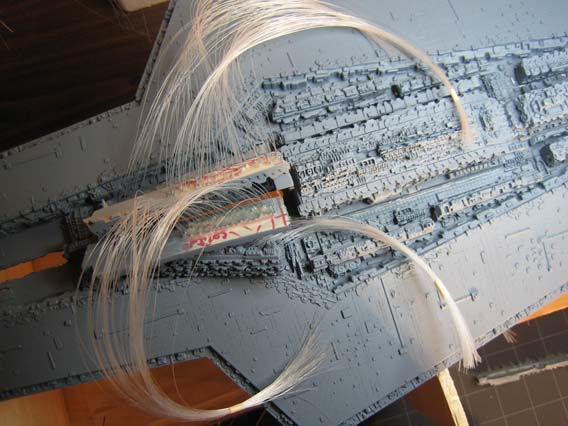
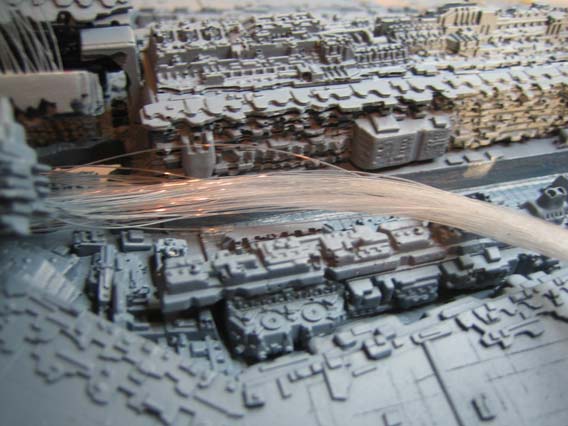
Because of the large amount of fiber I had crammed into the bridge/conning tower and the number of fibers in the surrounding cities, it got quite right in some areas of the center of the model. Snapping fibers happened often (along with cursing) as I jammed everything into place. Nothing like 30 minute epoxy for keeping you on a deadline.
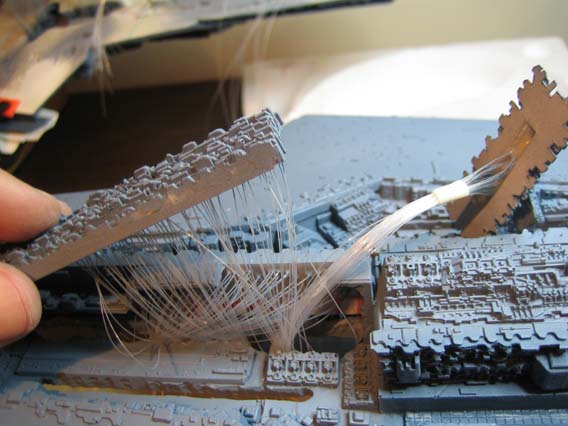
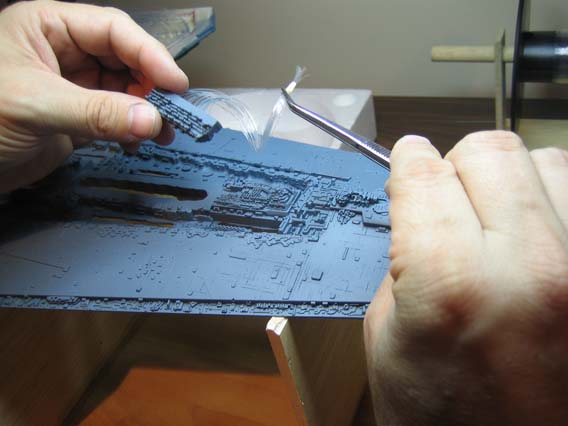
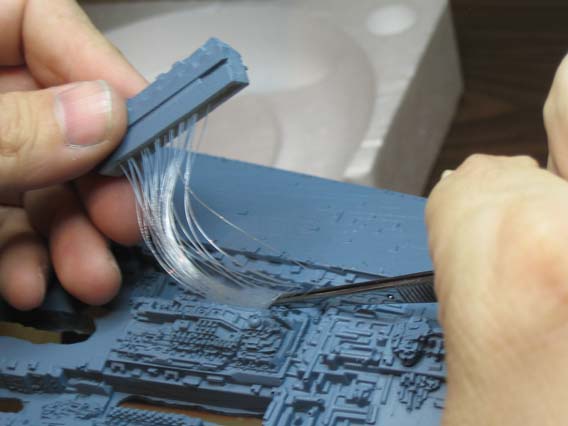
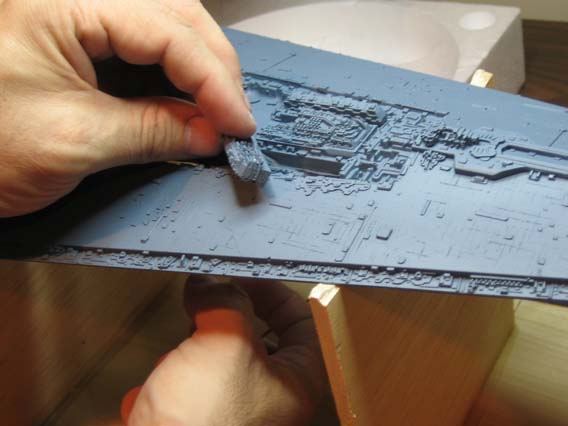
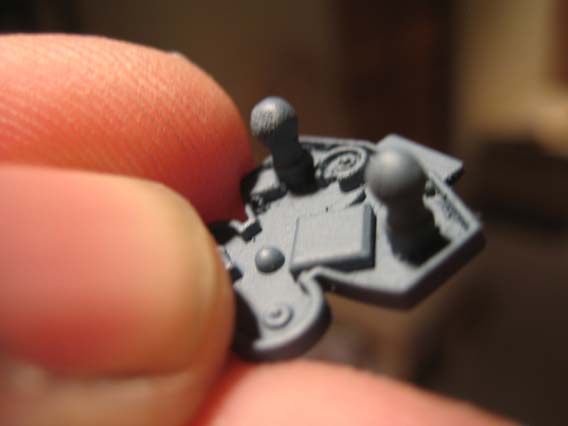
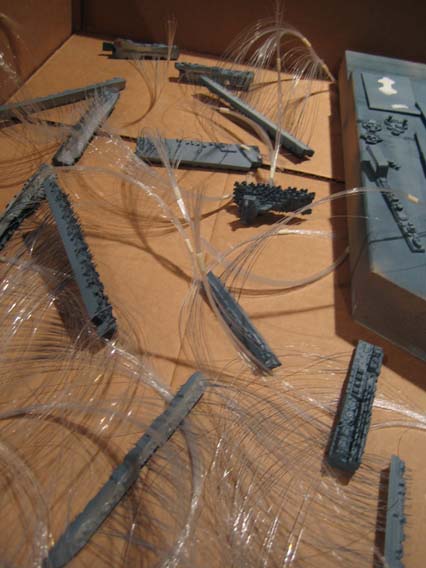 The detailed & primered hull ready for city assemblies. Because of the incredible number of surface angles, I built each city separate and painted them individually. Otherwise, I would never have been able to get paint into the detailed areas later.
The detailed & primered hull ready for city assemblies. Because of the incredible number of surface angles, I built each city separate and painted them individually. Otherwise, I would never have been able to get paint into the detailed areas later.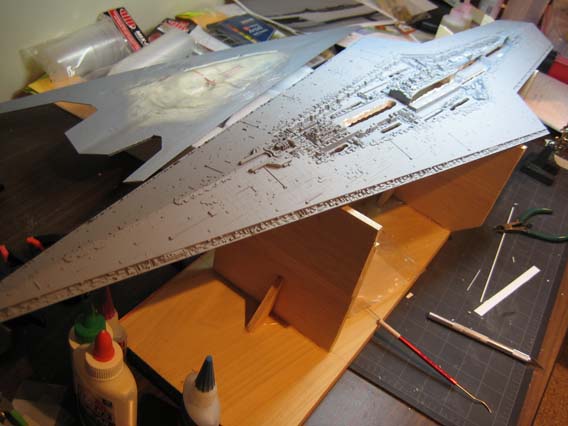
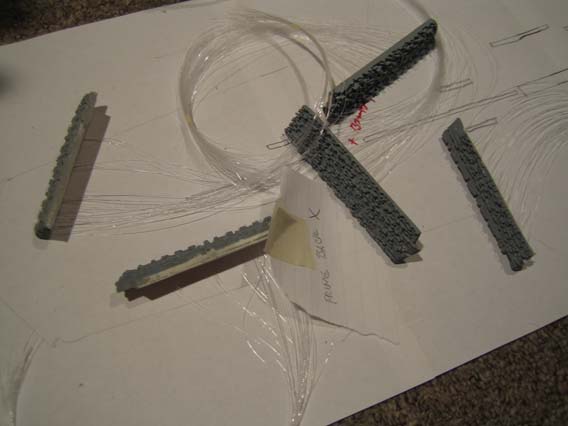
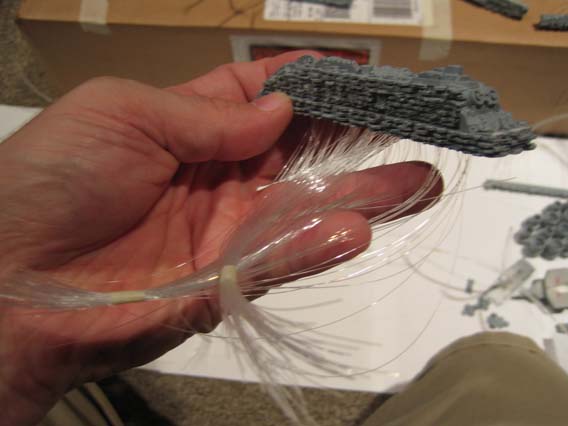
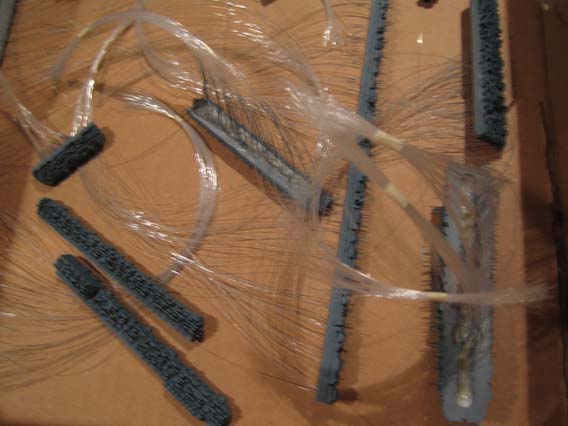
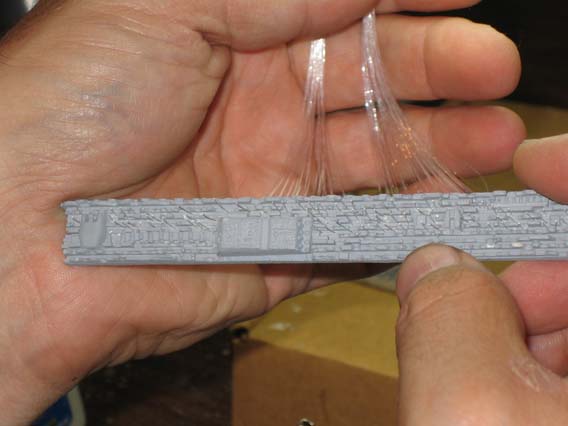

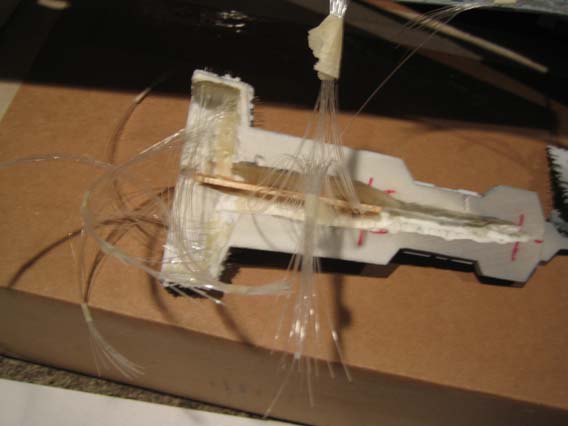
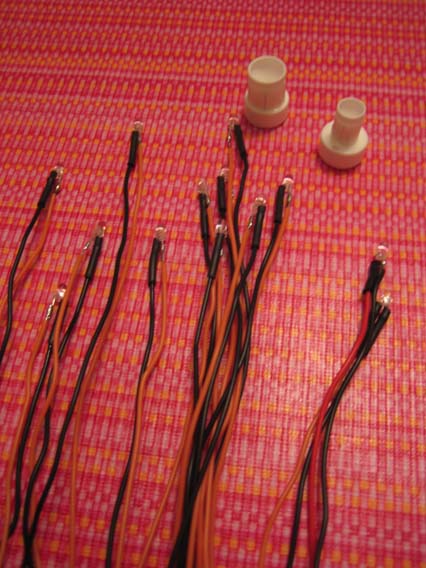

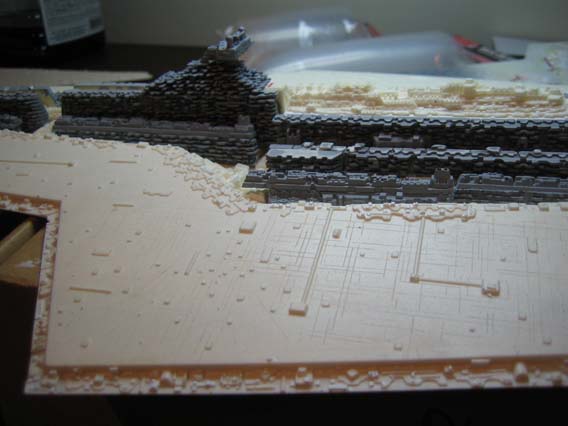
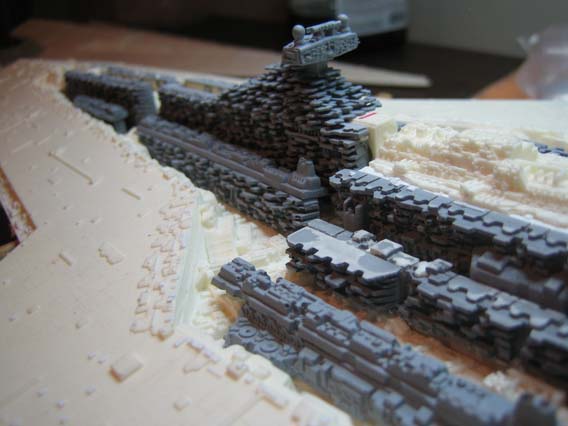
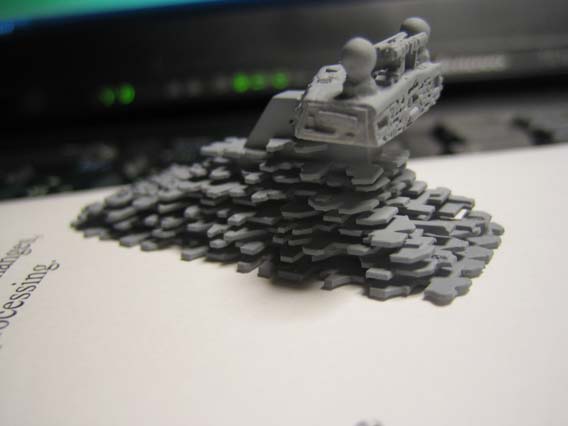
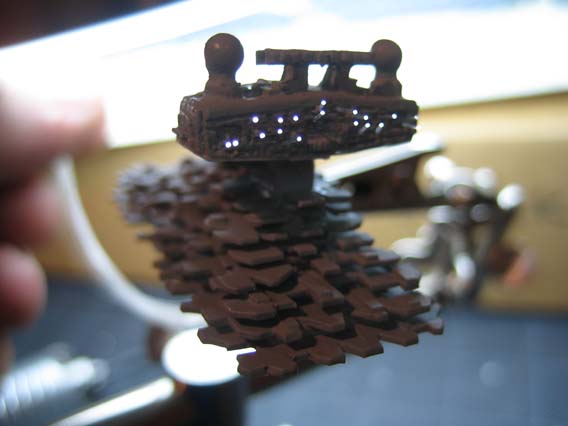
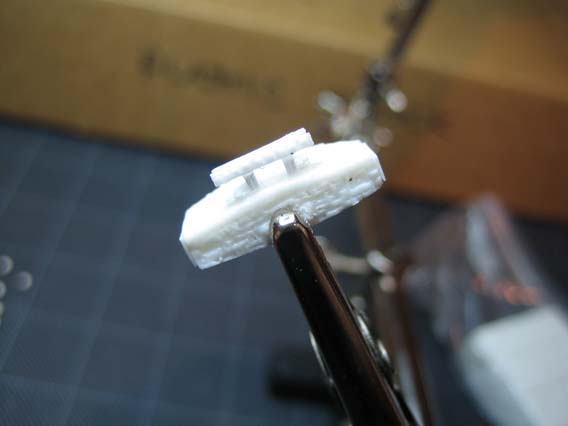
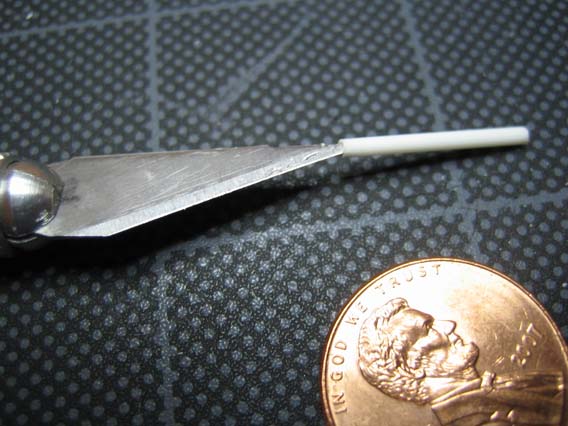
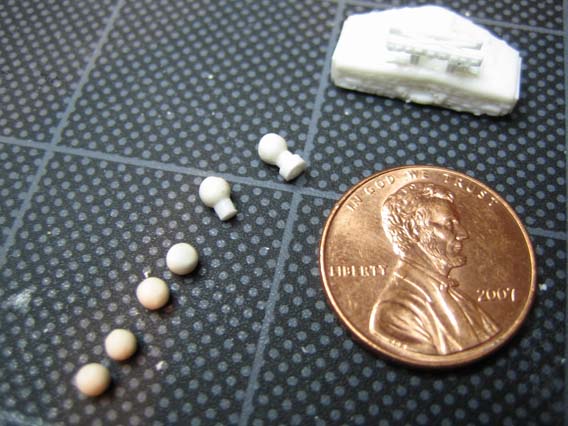
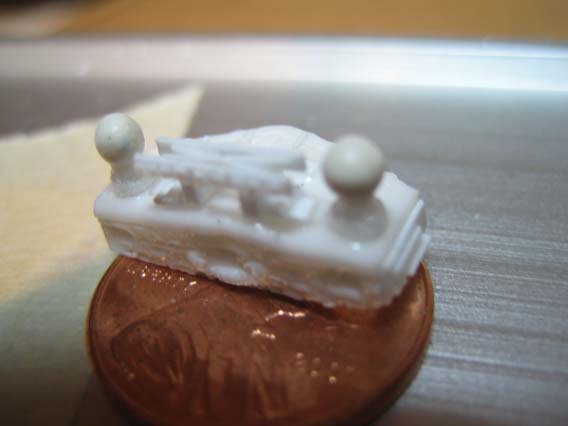


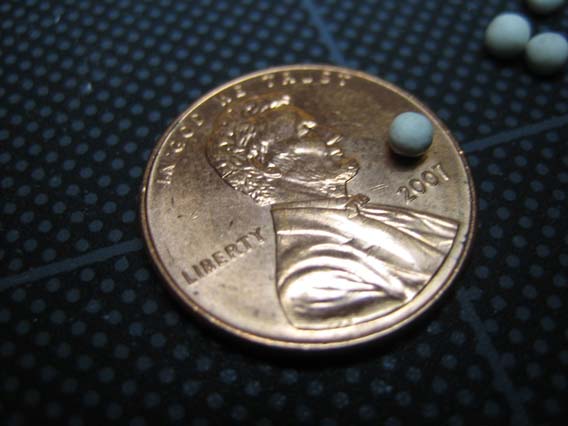
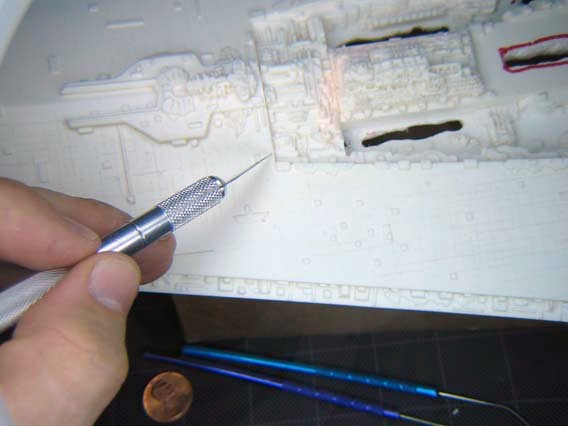
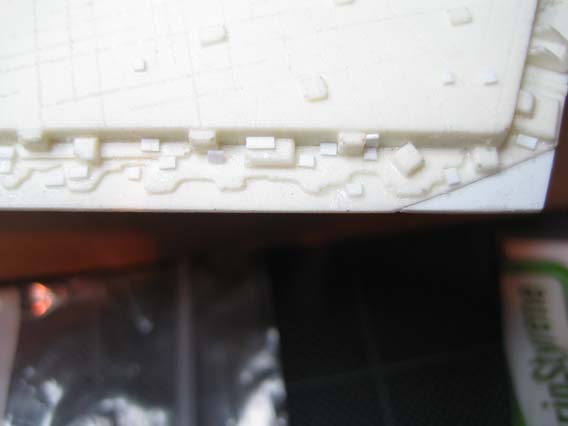
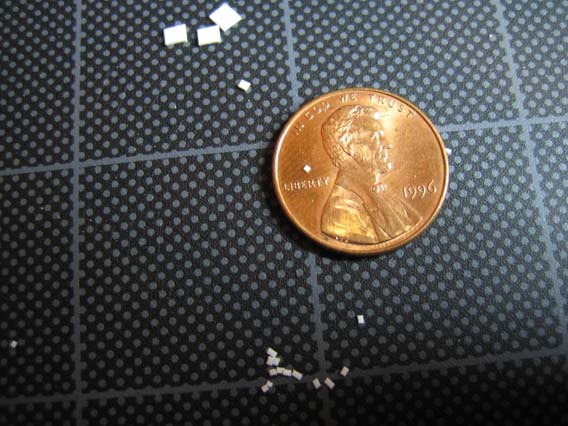
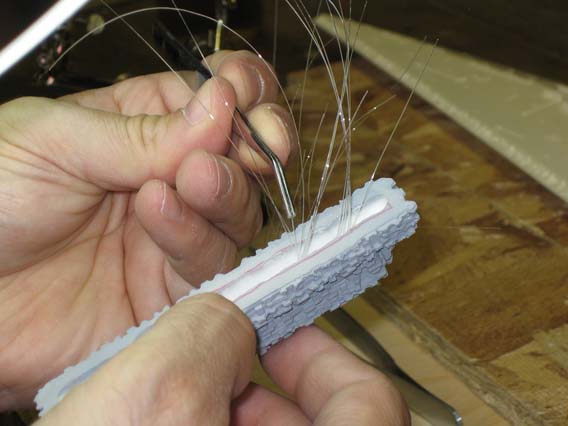
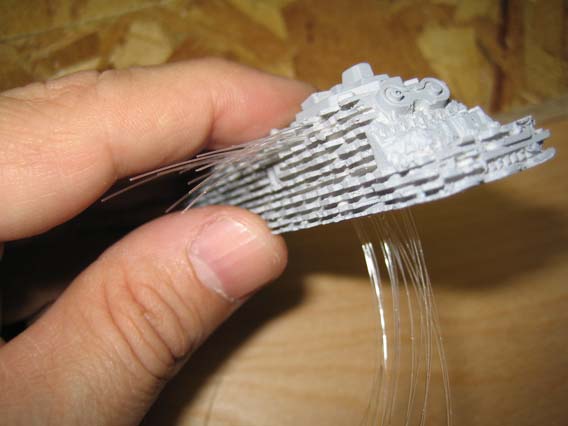


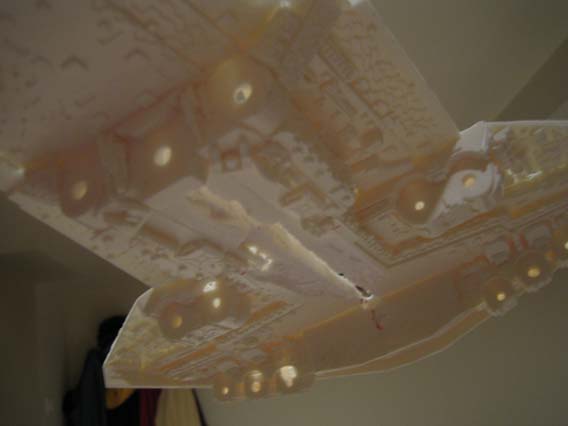
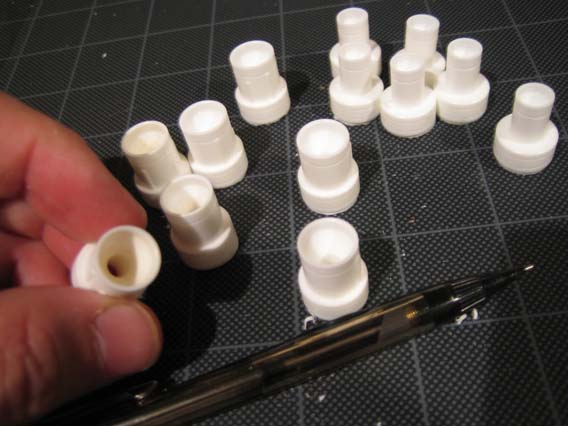

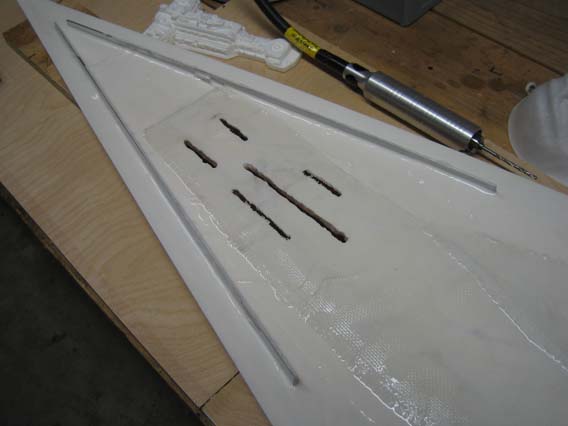 The main body uses fiberglass cloth and aluminum bars for added strength because of the thin profile. Boring passageways for future lighting has to be done around these structural pieces.
The main body uses fiberglass cloth and aluminum bars for added strength because of the thin profile. Boring passageways for future lighting has to be done around these structural pieces.
